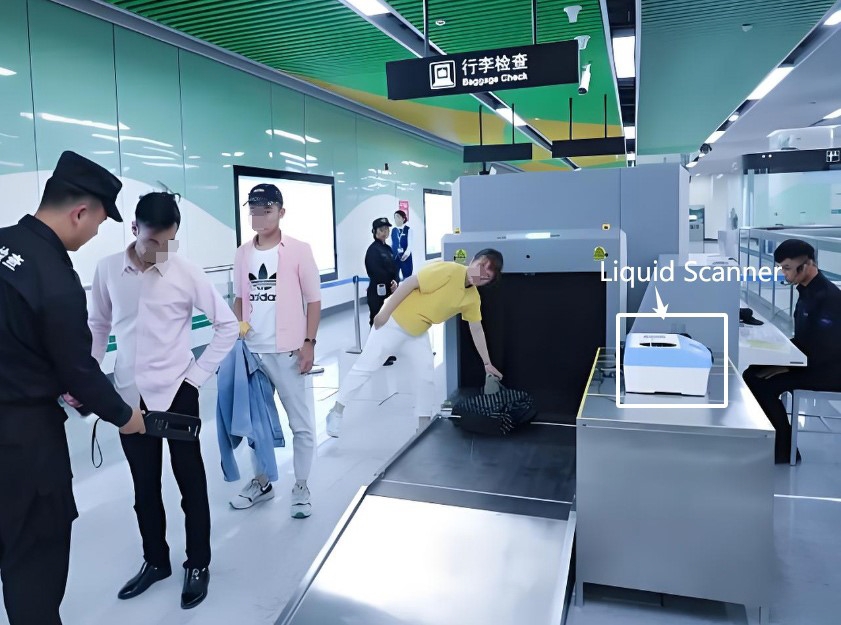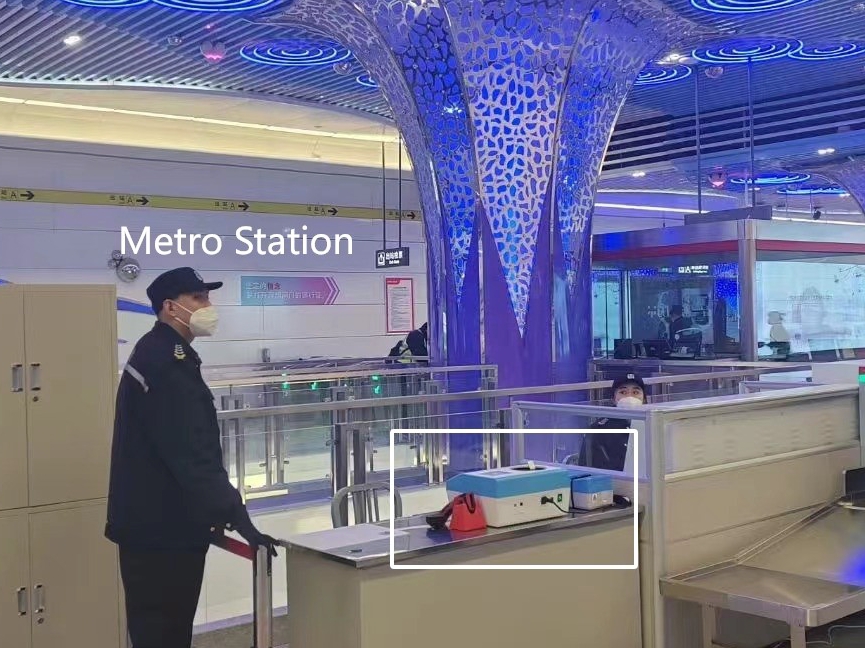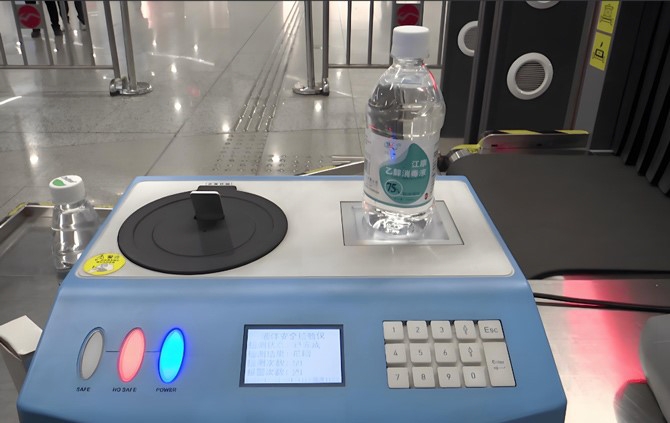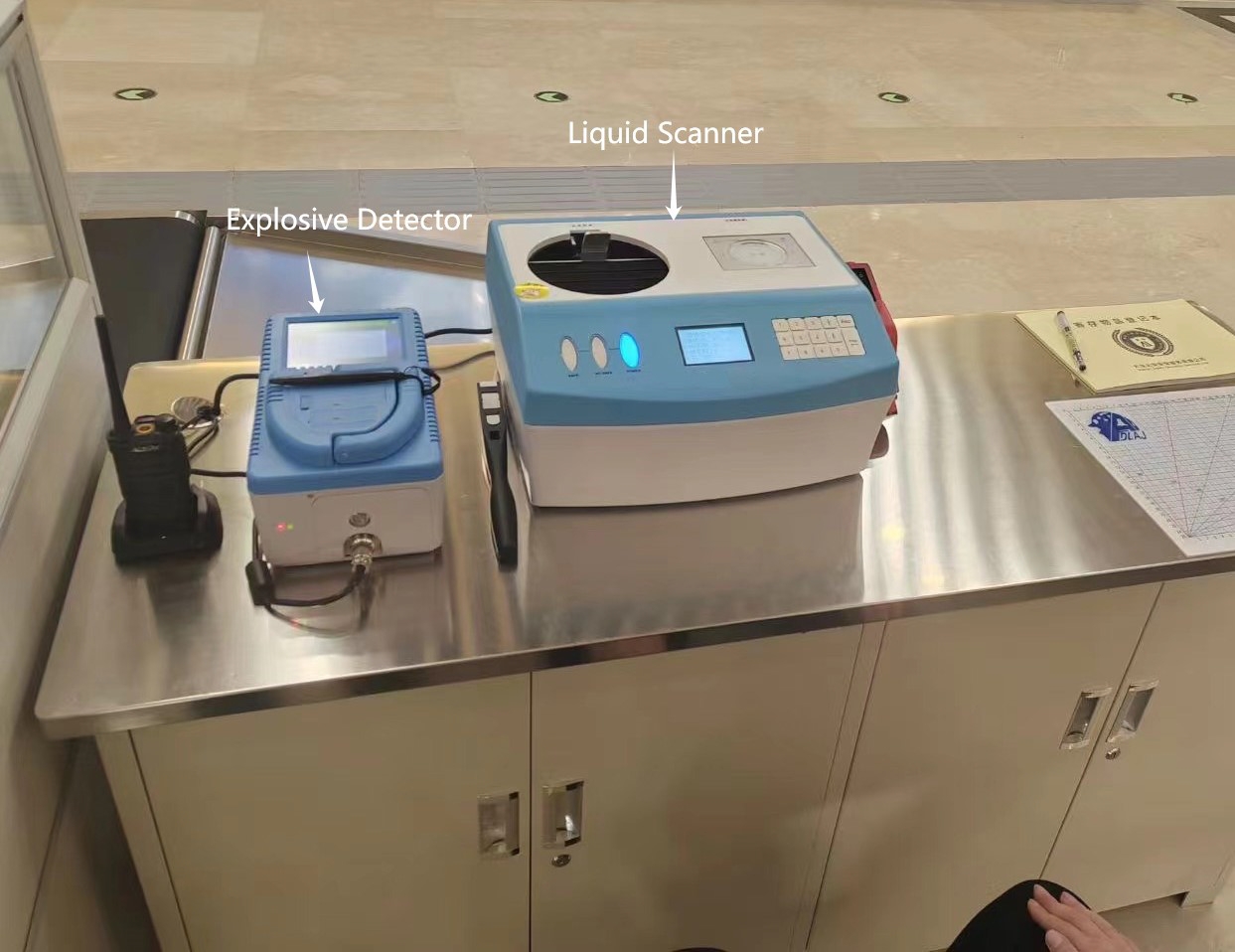Advancing Airport and Public Space Security: The Role of Liquid Explosive Detectors and Scanners in Modern Security Inspection Systems

In an era of growing global threats,
ensuring the safety of airports, train stations, ports, and other public spaces
has become more challenging than ever. Security systems have evolved
dramatically over the last few decades, with technology playing an increasingly
critical role in safeguarding these high-traffic areas from potential attacks.
Among the various threats to aviation and public transport, the detection of liquid
explosives remains one of the most significant challenges.
In the early 2000s, the discovery of liquid
explosives—capable of being carried on an airplane in a liquid form—changed the
landscape of security. In response, advanced security inspection systems were
developed, such as liquid explosive detectors and liquid scanners,
designed to identify suspicious substances in liquids. These technologies have
become critical in screening passengers and luggage to prevent the smuggling of
explosives. But what exactly are these systems, and how do they work to keep us
safe?
This article explores the importance of
liquid explosive detection technologies, the mechanisms behind liquid scanners,
and their integration into security frameworks, particularly within airports
and other public spaces. By examining the evolution, functioning, and future of
liquid explosive detectors and scanners, we will understand how these systems
play a pivotal role in modern-day security protocols.
1. Evolution of Security Inspection
Systems: From Metal Detectors to Liquid Explosive Detection
The concept of security screening has existed for decades, dating back to the mid-20th century when early airport
security measures focused on weapons detection, primarily metal objects. In the
early stages, X-ray machines, metal detectors, and manual bag
checks were the standard tools. However, these methods were limited in
their ability to detect modern, complex threats—especially those involving
liquids, which posed a challenge to security personnel worldwide.
The 9/11 terrorist attacks, followed by the
2006 transatlantic bombing plot (involving liquid explosives), highlighted the
vulnerabilities in traditional security systems. It became clear that the
detection of liquid explosives, which could be easily concealed in
everyday items like shampoo bottles, was a significant gap in airport security
protocols.
The subsequent years saw a dramatic shift
in security technologies, with the development of liquid explosive detectors and liquid scanners designed to detect such hidden threats in real time.
These systems have evolved alongside advancements in spectrometry, X-ray
imaging, and AI-driven detection algorithms.
Technological Advancements in Liquid
Detection
To effectively address the growing risk
posed by liquid explosives, technology had to evolve. X-ray machines were modified to accommodate better analysis of liquids. Ion Mobility
Spectrometry (IMS) was adapted to allow portable devices capable of
sniffing out trace amounts of explosive chemicals. Raman spectroscopy and mass spectrometry became more sophisticated, allowing for the
identification of chemicals present in liquids that might otherwise go
undetected.
These systems are now common in airport
terminals, but their development was not without challenges. Overcoming issues
related to false positives, screening throughput, and passenger
privacy was essential for achieving widespread adoption.
2. The Science Behind Liquid Explosives
and Their Detection
Liquid explosives are highly dangerous yet
difficult to detect. Unlike solid explosives that can be easily identified
through traditional scanning methods, liquids present a complex challenge
because they can be carried in containers that look perfectly harmless—such as
beverages, shampoos, or perfumes.
Understanding Liquid Explosives
Liquid explosives, such as Triacetone
Triperoxide (TATP), hydrogen peroxide-based compounds, and nitroglycerin,
are particularly concerning because they can be easily made with readily
available chemicals. These substances are highly volatile and can be detonated
using a small spark or heat source. Because liquid explosives are often stored
in clear bottles or containers, they can bypass traditional solid-object
detection systems.
The threat is compounded by the fact that
liquids can often blend in with other benign liquids. A bottle of water, for
example, may look indistinguishable from a dangerous substance unless proper
analysis is done.

3. How Liquid Explosive Detectors and
Scanners Work
Liquid explosive detectors are designed to
provide fast and accurate results without causing disruption to passengers.
They operate on a variety of principles, each aimed at rapidly analyzing
liquids without compromising security or privacy.
Handheld Liquid Explosive Detectors
Handheld liquid explosive detectors are compact, portable devices designed for rapid on-site analysis.
Security personnel can use these tools to scan liquids carried by passengers in
bags, bottles, or other containers. These devices use a combination of Ion
Mobility Spectrometry (IMS) and Raman spectroscopy and Ultra-Wideband Pulse Microwave
Reflection Method (UWB) to determine the presence of dangerous substances
in a matter of seconds.
One of the major advantages of handheld
detectors is their ability to perform a non-invasive analysis of liquids
without opening containers, minimizing both time and inconvenience for
passengers.
4. Impact of Liquid Explosive Detectors
on Airport and Public Space Security
Regulatory Impact
In the aftermath of the 2006 liquid bomb
plot, airport security authorities around the world scrambled to establish liquid
restrictions for passengers. Initially, these restrictions limited
passengers to carrying no more than 100ml of liquid in containers through
security, and all liquids had to be placed in clear, resealable plastic bags.
However, the development of more advanced liquid
scanners allowed for a more flexible approach. Today, many airports are
equipped with liquid scanners capable of screening full-sized bottles and
liquids in larger quantities, thus easing the burden on passengers and
improving overall throughput.
Balancing Efficiency with Security
The challenge for security agencies is to
balance efficiency with effectiveness. Liquid scanners must
quickly process large numbers of passengers and their luggage without
sacrificing detection accuracy. With increased throughput and faster
scanning systems, modern liquid explosive detectors help strike this
balance. Systems are now integrated into automated security lanes,
allowing for seamless integration with existing airport screening processes.

Securina SA1000 desktop liquid explosive
detector and SA1500 handheld liquid explosive detection systems adopt ultra-wideband pulse microwave reflection method and thermal conductivity
method, which is suitable for inspection of various common packaging liquids
such as glass, plastic, metal, ceramic, etc., without opening the liquid
packaging. It automatically detects flammable, explosive and corrosive
hazardous liquids with accurate and efficient recognition rate. Its purpose is
to prevent items containing dangerous liquids (which can cause burning or
explosive liquids) from entering safe areas, and can be widely used in safety
inspection places such as stations, subways, government agencies, stadiums and
other crowded or important activities.
Ultra-Wideband Pulse Microwave
Reflection Method for Liquid Explosive Detection
As security threats continue to evolve, so
too does the technology designed to counter them. One of the most promising
advancements in the detection of liquid explosives is the use of the Ultra-Wideband
Pulse Microwave Reflection Method (UWB). This cutting-edge technology
leverages microwave signals to analyze the properties of materials, including
liquids, and distinguish between harmless substances and dangerous explosives.
The Ultra-Wideband (UWB) Pulse Microwave
Reflection Method is an innovative detection approach that is particularly
effective in screening liquids for explosives. It is a non-invasive, highly
accurate, and relatively fast method for identifying materials based on their
reflection characteristics when subjected to microwave pulses.
How Ultra-Wideband Pulse Microwave
Reflection Works
The UWB method operates on the principle
that materials, including liquids, interact with microwave signals in different
ways depending on their composition, density, and other physical properties.
Here’s a breakdown of how the process works:
-
Emission of Ultra-Wideband Pulse: A
UWB system emits a pulse of microwave energy over a broad range of
frequencies. These microwaves travel through materials and are reflected
back to the sensor.
-
Reflection and Signal Analysis:
When the microwaves interact with a liquid or solid object, the waves are
either absorbed, transmitted, or reflected back depending on the
properties of the material. Different substances—such as water, oil, or
liquid explosives—will have unique reflection patterns. The UWB system
measures the time it takes for the microwave signal to return and analyzes
its frequency response.
-
Data Processing and Identification:
The reflected signals are then processed using advanced algorithms that
analyze the response of the material to the microwaves. By comparing the
results against a database of known substances, the system can identify
whether the material in question is a harmless liquid (such as water or
perfume) or a potentially hazardous substance like a liquid explosive.
-
Precise Detection: The high
frequency and wide bandwidth of the microwaves allow for extremely
precise measurement of material properties, making this method highly
accurate in distinguishing between different liquids. Moreover, the
reflection method provides detailed information about the internal
structure of the material, such as density, conductivity, and dielectric
properties, which are useful for detecting the presence of explosives.
Advantages of the Ultra-Wideband Pulse
Microwave Reflection Method
-
Non-Invasive and Safe: Unlike some
other detection methods, such as mass spectrometry or X-ray scanning, the
UWB pulse microwave reflection method is completely non-invasive. It does
not require the liquid to be physically altered, opened, or sampled, thus
preserving both the integrity of the item being tested and the privacy of
the passenger.
-
Highly Accurate and Fast: The UWB
method can provide results in real time, making it particularly useful for
high-throughput security environments like airports and transit hubs. The ultra-wide
bandwidth allows for detailed reflection analysis, which improves the
accuracy of identifying potentially dangerous substances in liquids.
-
No Need for Direct Contact: Unlike
traditional methods that might require physical sampling or a direct
interaction with the substance being tested, UWB systems can detect
explosives through containers or packaging. This feature is particularly
useful when analyzing liquids in sealed bottles or packages, such as those
carried by passengers through airport security.
-
Versatility: UWB systems can detect
a broad range of liquid explosives, including TATP, hydrogen
peroxide-based explosives, nitroglycerin, and other liquid
compounds that can pose a threat to public safety. The method’s
versatility allows for effective detection across various materials,
ranging from transparent liquids to opaque substances.
-
Real-Time Detection: One of the
major advantages of using UWB pulse microwave reflection for liquid
explosive detection is its ability to provide real-time data. When
integrated with screening systems, the technology can process data almost
instantaneously, allowing for quick and efficient identification of
potentially dangerous liquids without delaying passengers or creating
bottlenecks at security checkpoints.
Applications of UWB Pulse Microwave
Reflection in Security Systems
-
Airport Security: UWB pulse
microwave reflection technology is increasingly being used in liquid
explosive detection systems at airports, particularly for screening
carry-on luggage and other liquid-filled containers. As passenger volumes
rise and security standards tighten, the demand for efficient and
non-invasive liquid screening solutions has grown, and UWB-based systems provide
a practical answer.
-
Public Transit Hubs: Beyond
airports, UWB technology can be deployed in other high-traffic areas, such
as train stations, bus terminals, and subways, where
large numbers of passengers and goods pass through security checkpoints
every day. The ability to quickly analyze liquids in a non-intrusive
manner makes it ideal for locations where passengers need to move quickly
through security.
- Portable Detection Devices: One of the most exciting prospects of the UWB pulse microwave reflection method is the potential for portable devices capable of quickly scanning liquids for explosives. These hand-held scanners could be used by security personnel at events, concerts, and sports venues, providing an additional layer of safety in public spaces.

Securina Detection System Com., LTD is a
trusted manufacturer, supplier of liquid explosive detection systems based in China, providing cutting-edge security solutions that help safeguard
public spaces, airports, transportation hubs, and more. With years of expertise
and innovation in the field of security technology, we specialize in developing high-performance liquid explosive detectors and advanced scanning
systems that deliver unparalleled accuracy and efficiency.
Our mission is to enhance global security
by providing non-invasive, highly sensitive, and real-time
detection of dangerous liquid explosives. We understand the growing threat
of liquid-based explosives in aviation, railways, and other critical
infrastructures, and our products are designed to meet the highest standards of
safety and compliance, ensuring that they meet regulatory requirements while
optimizing operational efficiency. Our systems are built for both fixed
installations and portable applications, allowing for seamless integration in
high-traffic environments without compromising on detection speed or accuracy.
Whether you are looking to enhance airport
security, streamline cargo screening, or improve safety at public events, our liquid
explosive detection systems are engineered to provide peace of mind in any
environment.